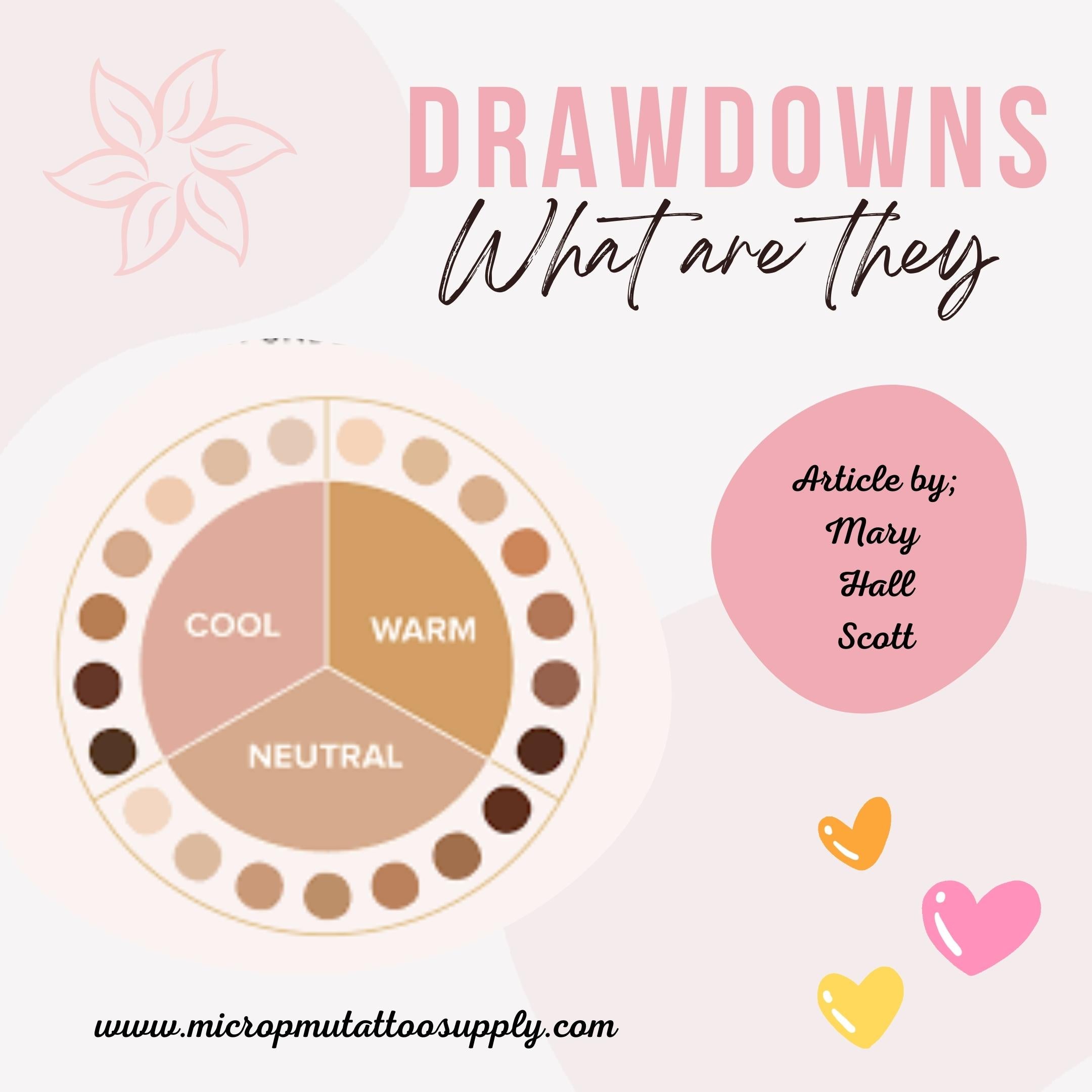Drawdowns
What are they?
Do you really know you're pigments?
- Are they warm, neutral or cool?
- What is their undertone?
- What is their mass tone?
Did you know many artists simply look at the color in the bottle to make their tattooing decisions? Or, they take a recommendation from Facebook.
It can be frustrating and confusing if you aren’t sure of a pigments undertone and/or mass tone. Performing a drawdown with your new pigment set allows you, the artist, to properly identify its undertones and test its mass tone.
The undertone is the pigment’s true color and it can be seen when it's diluted and smeared out.
- Warm undertones – orangey, peachy complexion/color.
- Cool undertones – bluish or greyish complexion/color.
- Neutral undertones – even complexion/color, not bluish or orangey.
Remember that, undertone is a subdued color specifically: a color seen through and modifying another color. This is what makes knowing your undertones so important.
A mass tone is the color a pigment is straight out of the tube, dense and unmixed with another color. While two pigments may look the same to the naked eye, their behavior when mixed can be radically different.
Identifying whether your pigments have warm, neutral or cool undertones, allows you to make a conscious decision when selecting pigments for your clients.
How to perform a drawdown?
What you’ll need:
- A Drawdown chart, or white printer paper.
- Palette Knife, or a plastic card works too.
- Your choice of pigments.
- Q-tip
- Cup of water
Below is a sample of a draw down chart designed by Tina Davies.

Steps to find your pigments Mass Tone:
- Shake the pigment bottle very well.
- Open the bottle and drop two drops of pigment onto your paper, at the top of the page.
- Take the short edge of the plastic card, push hard and pull the pigment drops downwards on the paper so that the ink spreads from opaque to translucent.
- At the end of the page, lift the card carefully and clean the card.
- This is your mass tone.
Undertone with a Q-tip:
- Take a Q-tip and dip it in water until it’s saturated.
- Dip the Q-tip lightly at the end of your first drawdown and the pigment will instantly transfer into the swab.
- Squiggle and draw down the cotton swab on the paper to reveal the undertone of the pigment.
- This is your undertone.

Photo compliments of Tina Davies.
Keep these drawdowns in your studio in a binder for easy reference.
Visuals are a great way to learn and understand your pigments.
These will assist you in making the right color choices for your clients. Also, remember to take a toothpick or Q-tip and apply a swab to your clients skin. Access how the pigment looks when placed directly on their skin.
Analogy: Let think about paint on a wall.
If below this was green paint and you put a taupe color over it, it will look different than if you put a cream color over it, as you can See below.

This is why we color swab skin.
Do a color swab of Tina Davies Medium Brown on a Fitz 1 and then on a Fitz 4. The Medium Brown will look different due to the color of the skin being different.
It would be reversed of the illustration above, the background color would be different and the color (pigment) on the top would be consistent.
This will also be affected by the opacity of the color:
Opacity is the:
the condition of lacking transparency or translucence; opaqueness.
There are many things to understand about your pigments.
Start with doing the drawdowns to understand mass tone and undertone.
Then look at the opacity of your pigments. You can do this buy using a piece of paper with the dark label on it.
If the color is translucent (you can see thru it) it maybe a great pigment for virgin skin on the brows to create a soft subtle look. However, the pigment can't be to translucent. It may also be a great pigment for a lip blush.
However, if you are trying to cover something like old PMU in the brows you will need a pigment that is more opaque. The more the original pigment is faded the easier it will be to cover. A pigment that is still quite apparent may require an ink with more opacity. At this point, a removal session, or several removal sessions maybe the best option.
Mary Hall Scott
B.S. R. T. (R) CPT MPS
Copy and Paste this link into your browser to see Tina Davies Video.
https://youtu.be/tGeNMedkCto






1 comment
Great info always Mary.
Thank you